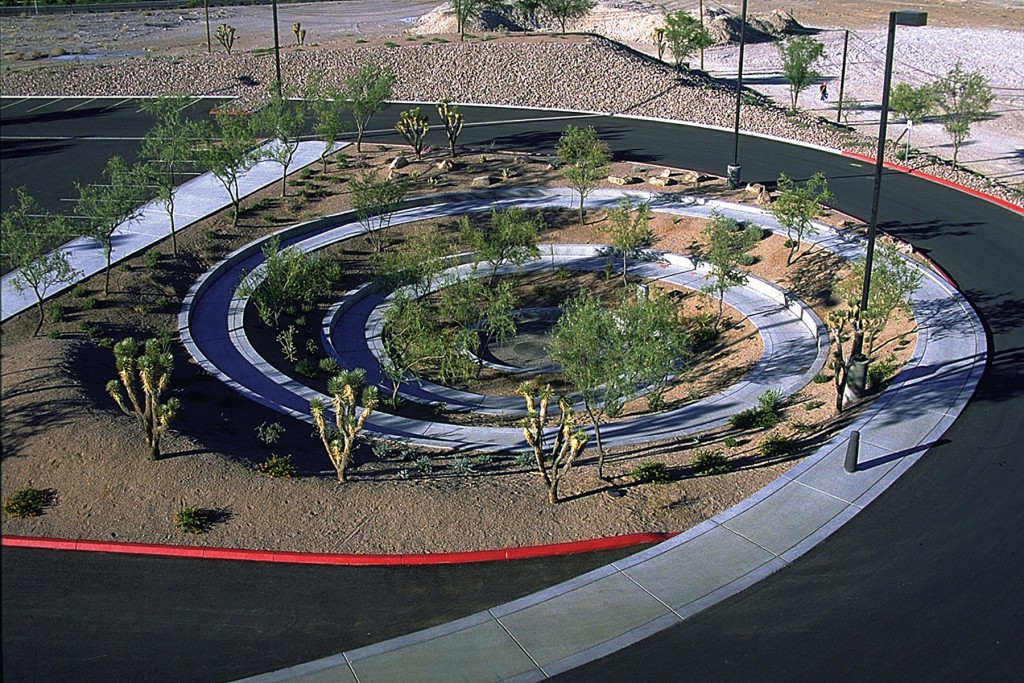
Libraries serve as critical community partners by evaluating current and future needs and proactively filling gaps in the community fabric. Often libraries forget to use a key asset in their toolkit: the outdoors. Library buildings have historically included outdoor spaces, often to underscore the building’s significance and to contribute to the beauty of place. Libraries of all scales and in all climates can use their outdoor spaces to fulfill their missions and effectively serve their communities. By turning the library inside-out, libraries can increase their available real estate for providing services and add a host of benefits for patrons.
Encouraging Healthy Lifestyles
Encouraging healthy lifestyles starts inside the library and continues to the outdoors. Sit-to-stand worktables are prevalent in staff workrooms and will also soon be common in public areas. For lengthy library visits, these types of workstations can help get the blood flowing and prevent back and neck issues. Libraries can also promote the use of stairs instead of elevators by making stairs easy to find, more convenient to use and even fun. Unique features such as literary quotes on stair risers and treads that play music when stepped on can motivate users of all ages groups to use the stairs.
Having a relationship with the outdoors from inside the building can also have myriad health benefits. Studies have shown that a visual connection to the outdoors increases focus and productivity and provides a sense of well-being. Spaces with access to natural light can have rejuvenating benefits for library users and staff.
Southwest Regional Library (KY) features curving paths and an infiltration basin bridge that offers visitors opportunities to learn about the environment as they approach the building.
The xeriscape-designed garden outside the Sahara West Library and Fine Arts Museum (NV) invites visitors to enjoy strolling the site prior to
entering the building.
Providing safe, attractive exterior spaces for staff and visitors extends the focus on wellness. Urban locations can encourage walking by establishing themselves as nodes on urban walking tours, featuring outdoor programs and displaying didactic panels that highlight the benefits of being active. They can also promote bike use by offering secure, covered bike parking.
Locations with more green space can host community gardens, supporting the consumption of nutritious, non-processed food. Well-lit walking paths and convenient connections to surrounding parks and pathways are popular amenities for many libraries. Weather and climate need not be barriers to using these outdoor paths. The sharing economy has increased borrowing of all sorts of things. Why not offer snowshoe or ski rentals at the library to show a commitment to health and wellness?
Teaching Care for the Earth
Human health is inextricably linked to our care of the planet. As a highly visible community entity, the library can teach community members of all ages about the art and science of composting, water conservation, and ecological best practices. The Ramsey County Roseville Library’s (MN) children’s garden teaches water conservation by featuring an above-ground cistern that collects rainwater from the building’s roof. A spigot on the cistern gives children access to the water, which they can collect in library-provided buckets to water the plants. When a rain event causes spillover, the water travels in a series of visible streams with displays that offer teaching moments about the water cycle. Views of exterior sustainable features from inside the building also serve as effective teaching tools.
The strategic placement of the Roseville Library’s rainwater collection system within view of the children’s lounge area allows the library to showcase water conservation even in inclement weather.
Vistors to the Ramsey County Roseville Library (MN) can learn about water conservation through didactic panels throughout the site and parking areas.
The interactive children’s garden outside the Roseville Library engages, entertains and educates young visitors about sustainable stormwater management practices.
Providing Space for Making
Students of all ages and disciplines are increasingly called upon to create projects that incorporate analog and digital making, and the maker movement has brought with it new reasons to be outside.
Some making activities are quite messy, while others require a lot of space or rely on nature’s resources to succeed. The library can become a hub for creative activities both inside and outside by simply dedicating some space and providing access to power. Urban libraries can put sidewalks and patios to use. The visibility to passersby will increase interest in the library and reinforce the institution as a relevant and current community asset.
Maker activities spill out onto the sidewalk at the Madison Central Library (WI).
Providing Respite
Project for Public Spaces describes great public places as accessible, clean, attractive, safe and comfortable places that support activities, where people of all ages meet each other. If the library offers a variety of options (shaded, sunny, private and communal) and a strong outdoor Wi-Fi signal, diverse groups will use outdoor seating areas for work, meetings and project work, as well as reading and contemplation.
A reading porch outside the Hennepin County Library in Maple Grove, MN provides respite and a space for reading and reflection.
Hosting Community Fun
Does your library building have a large nondescript exterior wall? The Rice Lake Public Library made the most of its building’s blank wall by turning it into an outdoor screening room. Other libraries build patios outside multi-purpose rooms, allowing receptions and meetings to spill outdoors on nice days. Snowman-building competitions or art “make-offs” can bring a community together. The library occupies a unique place in society, and connecting with community members on a purely fun level buttresses the perception of the library as a safe place for all and a significant asset in the community.
A bit of paint becomes a movie screen on Rice Lake Public Library’s (WI) building wall; the library hosts regular movie nights in summer months.
Generating Energy
As we progress from buildings being sustainable to the goal of having them regenerate and give back to the environment, outdoor spaces are increasingly being pressed into practical service. As technology advances, photovoltaic (PV) panels and wind turbines are becoming more commonplace, and they educate library users about the importance of renewable energy sources. Libraries can add an element of fun by outfitting green roofs or outdoor patios with bicycle energy farms to help staff and visitors burn energy (and calories), while creating electricity to power an aspect of the library, such as laptop charging stations.
Photovoltaic (PV) solar panels on Madison Central Library’s green roof educate the community about renewable energy.
Feeding Inspiration
Libraries fuel inspiration through a wide variety of resources inside the building and through Internet access. Inspiration for patrons can also come from outside the building. Outdoor spaces can feature public art, offer serendipitous encounters and encourage community interactions.
Amenities such as Madison Central Library’s LED wall pique the interest of artists and passersby, promote interaction with the building, and create new definitions of what it means to be a central community asset. Public art installations, such as those created by Candy Chang, artist of the wildly successful “Before I Die” project, engage people in interesting ways on their own terms and generate energy and unity.
All of these examples provide ways to leverage outdoor spaces and activities, as well as reinforce them throughout the design of the library. By taking an inventory of their outdoor assets and discovering news ways to utilize them, libraries can provide unique services and outreach to their communities.
Traci Lesneski
Latest posts by Traci Lesneski (see all)
- Key Features of Collaborative Library Spaces - October 6, 2017
- Why Outdoor Spaces Are Essential for the 21st-Century Library - August 3, 2016
- The Library as a Center for Innovation - November 11, 2015

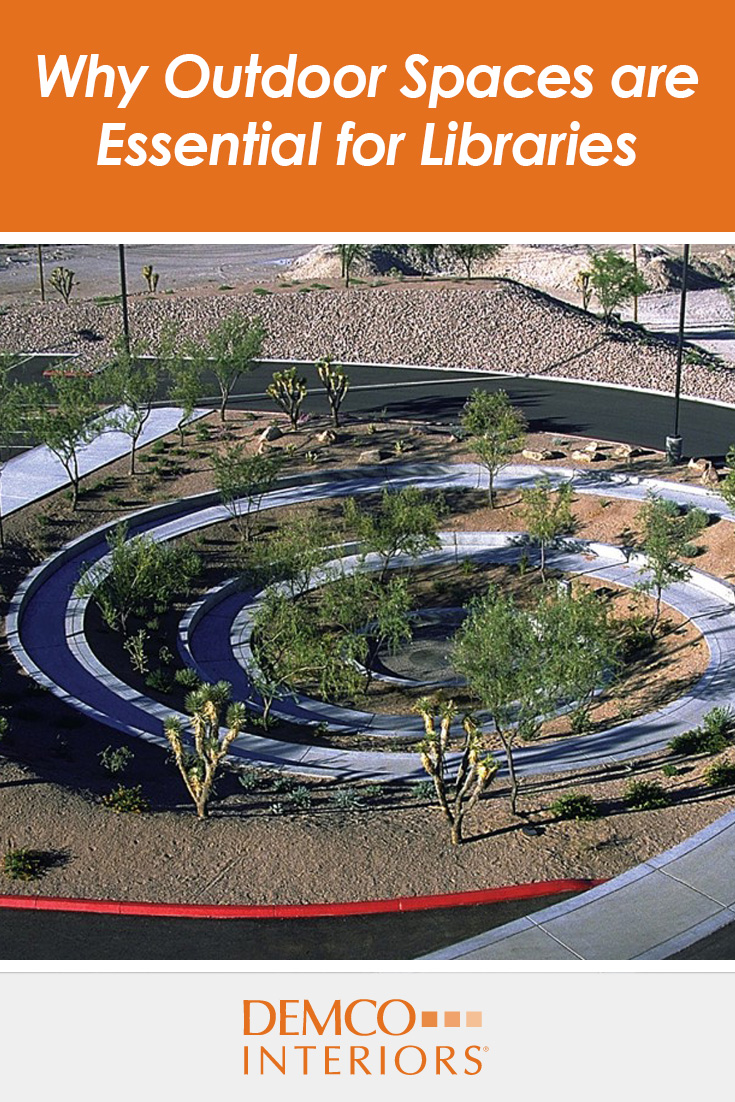
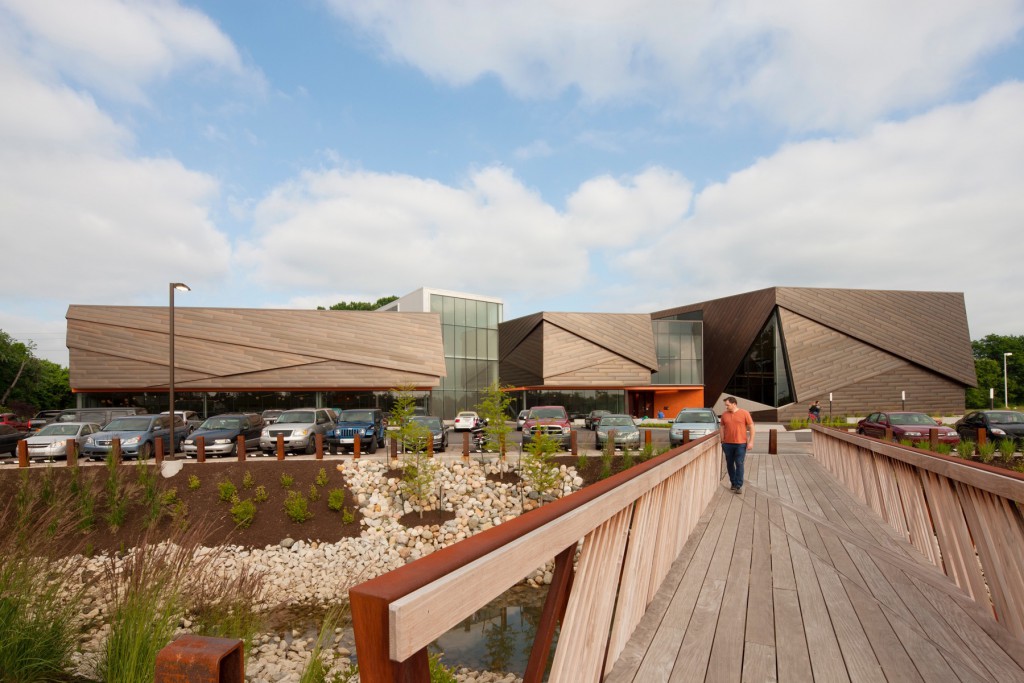
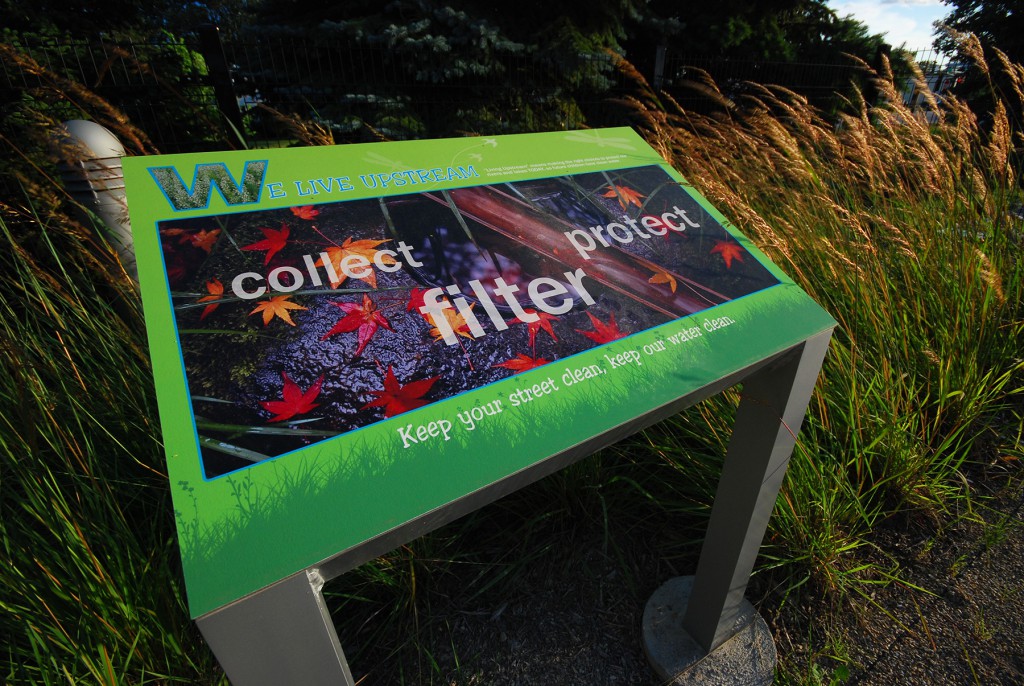

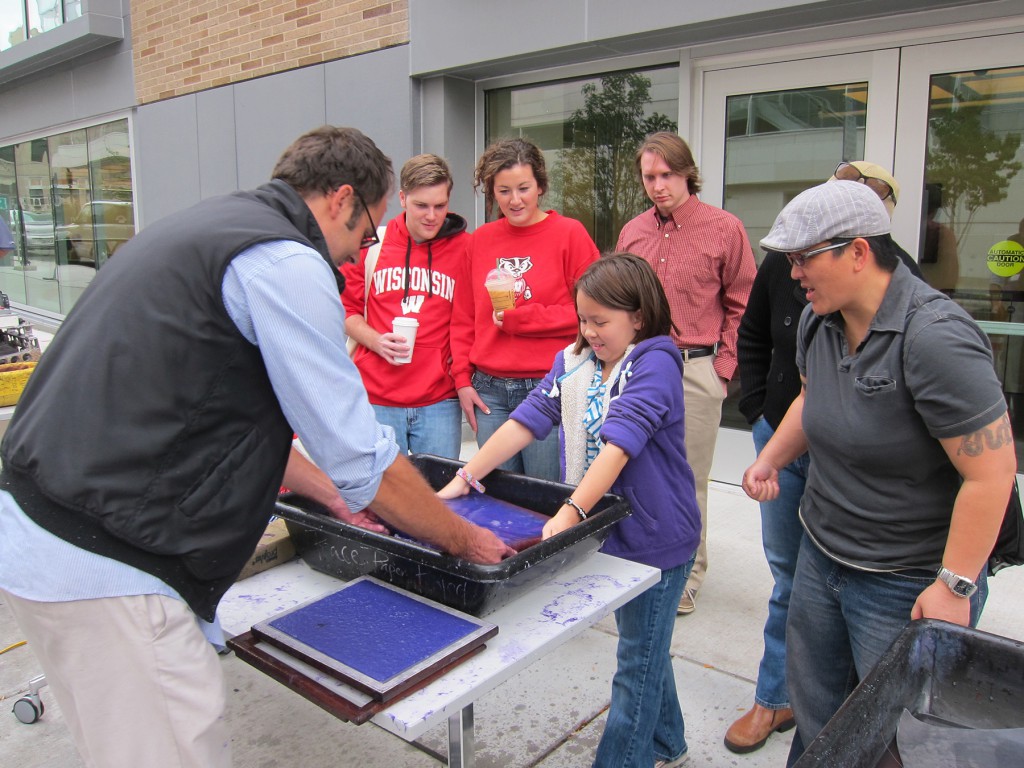
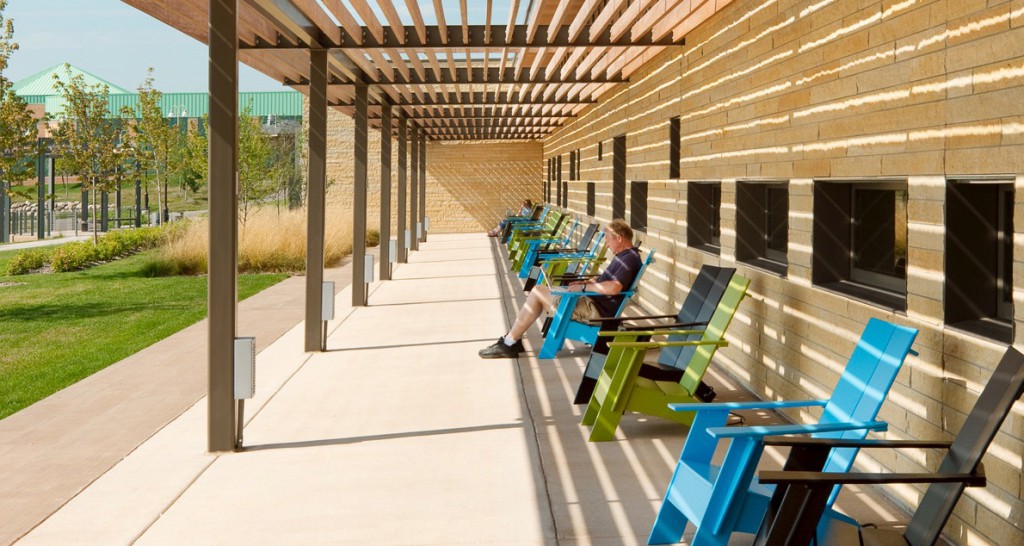
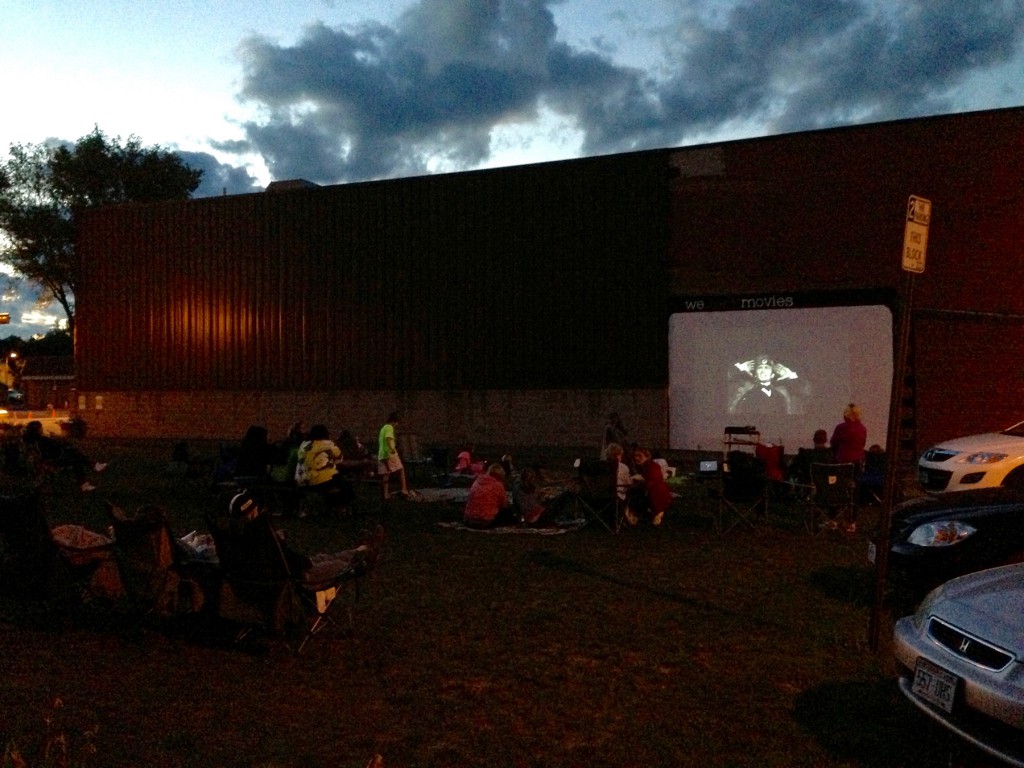
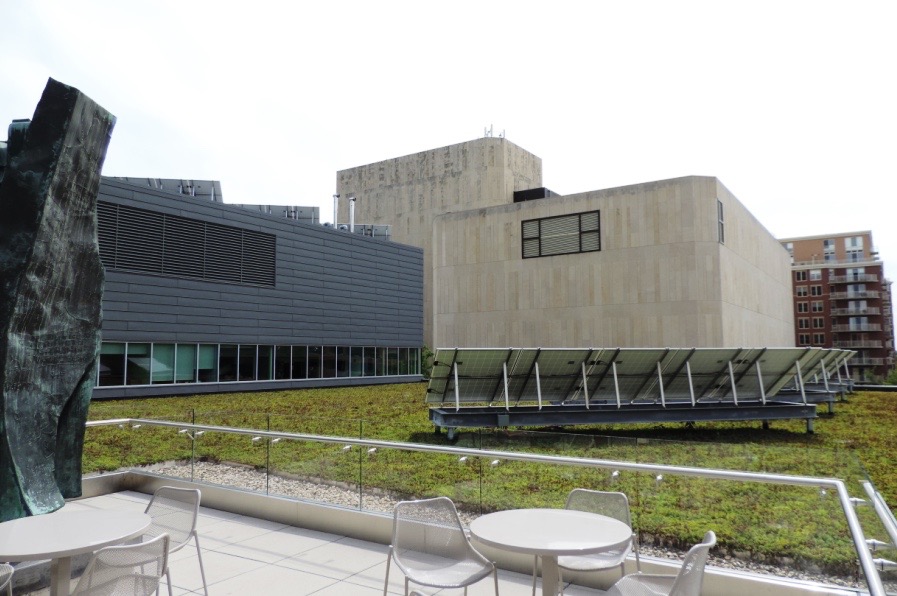
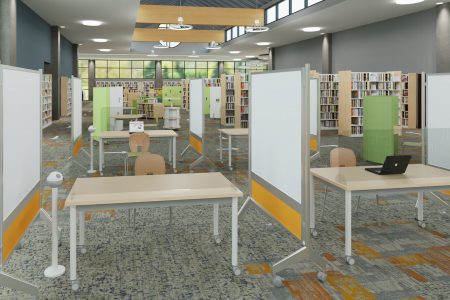
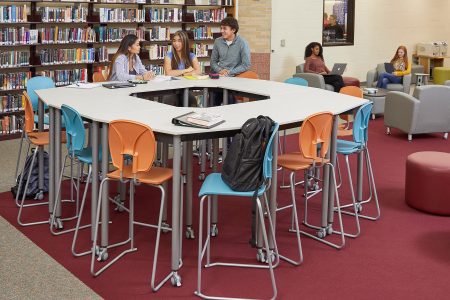
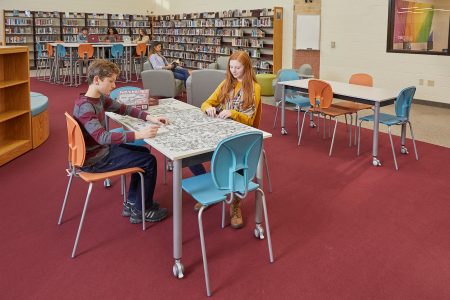
August 10, 2016 @ 7:20 pm
Enjoyed seeing what other libraries do to connect with the outdoors. My beautiful local library is situated on a forested cliff overlooking the Penobscot River, and I visit the library as often for the walking trails as for the books! https://www.facebook.com/EdytheDyerLibrary/home
August 15, 2016 @ 4:24 pm
Dear KW, Thank you so much for the compliment and for adding to the conversation by sharing your outdoor experiences at the Edythe L. Dyer Community Library. Outdoor library spaces is a topic we’ll continue to follow and blog about. Thanks again for your comment.